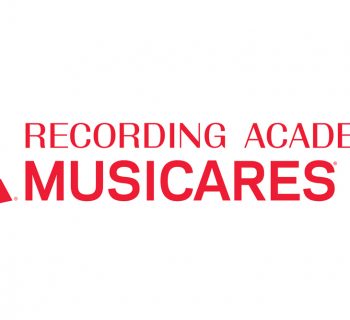By Bobby Borg and Britt Hastey
(Excerpted from Personal Finance For Musicians with permission of Rowman & Littlefield)
Invest! Invest! Invest! It’s time for musicians to make money and get rich quick. After all, the pandemic of 2020 still has everyone in a hole and nothing could be better than striking it big! Right?
Perhaps! But let’s not get ahead of ourselves. The road to true wealth (measured in assets and liabilities) is a long process. It involves several steps you must check-off before grabbing your mobile phone and the latest investment app to try your luck. Read: Investing is not a game!
What follows is our 7-point checklist to responsible investing and building wealth. We start at the beginning with creating a steady flow of income all the way to playing with funny money if you must. Have patience—at times the process might seem boring and include advice you’ve already heard, but investing was never meant to be fun or sexy when done right.
NOTE: The seven steps presented here are in a systematic order, but depending on your situation, feel free to skip straight to investing or tackle two or more steps simultaneously. Just be sure to speak with a financial planner to make sure that your path to success is right for you.
1 CREATE AND MAINTAIN A STEADY FLOW OF INCOME
The first step to investing and building wealth is creating and maintaining a flow of income.
If you are a musician earning zero income or just living from one gig to the next, you are never going to get anywhere unless you turn on the money faucet. This could mean getting more music gigs, utilizing freelance methods, or getting a “real” job! Let’s consider these options:
Get More Music Gigs: Always attempt to use your musical talents for work first. For me (Bobby speaking), I offered drum lessons in the house that I was renting with roommates. With a little advertising, I had 30 students at $30 an hour. On top of that, I got a house gig with a soul band at $225 a week for three nights a week. Furthermore, I played weddings with the teachers at Berklee College of Music on the weekends at $300 a pop. If I could earn 5k out of school, so can you.
Utilize “Regular” Freelance Methods: If music gigs are not an option, go with all of the available “regular” freelance methods to make money. One musician we know drives for Uber, Postmates and Instacart and brings in several thousands of dollars per week (all without missing a single band rehearsal or evening gig). This guy even showcases his music to his Uber customers to get feedback while he works! In one instance, he even picked up a famous record producer which led to a studio session.
Get a “Real” Job: Finally, if none of the above situations work for you, go for a steady day or night gig. We suggest you find something that is connected in some way to your ultimate dream of music. One musician we know got a steady gig working as a salesperson at Guitar Center. Not only did he make steady money, he promoted his gigs to customers to increase his concert draw, and networked with equipment reps to secure endorsement deals. He killed two birds with one stone.
Look gang, whatever route you take, just remember that the road to investing and building wealth starts with your own ability to generate income. While this might sound like common sense, you’d be surprised at the number of musicians who still sleep on their friend’s couches penniless waiting to get discovered on TikTok. While people do get lucky, don’t bet everything on number 7. So, roll up your sleeves, be strong, and put your human capital to work.
2 CREATE AND LIVE
BY A BUDGET
Okay, so now that you have a steady flow of money coming in, it’s time to create and live by a budget. Remember, it’s not how much you make, it’s how you manage your money that counts. Follow these three steps:
Set a Savings Goal: Create a monthly objective setting forth a percentage of your take-home pay that you’d like to save each month. To illustrate, if your take-home pay was 5k a month, your objective might be to save 10 percent (or $500).
List Expenses: Now list all of your expenses showing how you’ll cleverly use that 5k to meet your savings goal of $500. Know that fixed expenses like rent will be easy, but other expenses like groceries will require you making an educated estimate based on what you spent in prior months. And finally…
Track Expenditures: Track all of your expenditures throughout the month by counting receipts. If you stay on budget, then bravo for you. If there are overages, then readjust your budget and try again. Eventually, you’ll find a plan that works for you. And best yet, you’ll have that 10 percent surplus of money you were shooting for.
While creating a budget might seem like a lot of work, remember that it really is the hallmark to getting your financial shit together. And like everything else in life, the more you use a budget, the easier it will get. So, take our word for it gang, live and die by a budget!
3 PAY OFF DEBT AND ESTABLISHSTRONG CREDIT
Now that you have a surplus of monthly cash, put it to good use by knocking out your debt.
For most musicians, debt will probably be limited to credit cards, school loans, and an automobile. Whatever the case, just know that there are number of strategies to get debt-free. Consider the following:
Use the Debt Avalanche: Use the “debt avalanche” strategy to double-down consistently on your “highest interest loan” while at least paying all your minimum balances on your other loans. Once paid off, take the amount of money you allocated for the highest interest loan and add it to the minimum payments on the next highest interest loan, and so on, until you no longer have debt.
Use the Debt Snowball: Alternately, you can use the “debt snowball” strategy to double-down on your “smallest balance loan” while paying at least all your minimum balances on your other loans. Once paid off, take the amount of money you allocated for the smallest balance loan and add it to the minimum payments on the next smallest balance loan, until you no longer have debt.
Look peeps, the bottom line is that paying off debt means ridding yourself of wasteful interest payments. Furthermore, it means building your credit for important loans down the road, and saving a little money that you can use for a rainy day.
4 ESTABLISH AN EMERGENCY FUND
After digging yourself out of debt (congratulations), the next step in our 7-step process to investing and building wealth is using that surplus money to establish an emergency fund. This is money you amass for life’s unexpected moments when all things go south. Consider the following:
Save For Six Months to a Year: Attempt to save at least six months worth of living expenses. I (this Bobby) personally feel more comfortable with one year of living expenses. I was injured in an accident (struck by a truck) and it took longer than a couple of months to heal. On top of that, it took a couple more months to reestablish work. So, whether it’s six months or a year, just build up that freakin’ fund ya’ll.
Keep It Liquid, But Let It Grow: Keep your emergency fund in a safe place where it is liquid (immediately available) and growing in interest. Consider a savings account with an online bank, a money market account with a local bank, or a short-term bond fund via a brokerage company like Vanguard. Where ever you park your money, just remember you’ll need access to your “cash in a flash” when the “shit hits the fan.” So, never tie this money down in stocks or long-term CDs or bonds. And finally…
Keep It Fully-Funded: Remember that should you ever use your emergency fund, you need to refund it. Be clear that the plan is to be fully-funded and ready for any emergency for the rest of your life. Okay? Good job! Now. Let’s move on.
5 START SAVING FOR RETIREMENT
Now that you have a job, a budget, no debt and an emergency fund, we can begin thinking about shifting all your surplus money into retirement accounts. Make no mistake, retirement (or retirement planning) is not just for old folks, it starts as early as 20 years old and lasts a lifetime. Be sure to consider the following:
Take Advantage of Employer-Based 401Ks: Start by taking advantage of “tax-advantaged” accounts such as a 401K offered by your employer. This allows a payroll administer to direct a portion of your pre-tax income directly into an interest earning account to grow and be taxed upon withdrawal in retirement. You can contribute as much as $20,500 a year if you’re younger than age 50, and $27,000 annually if you’re 50 or older. And if your boss is really cool, they’ll even match additional funds up to a percentage of your contribution (yup, free bonus money). Hey, this is the best deal in town.
Open Up An Individual Retirement Account: Now, if you don’t have access to a 401K, open up an Individual Retirement Account (IRA) on your own. A Traditional IRA allows you to personally invest “pre-tax” dollars to grow and be taxed upon withdrawal in retirement. You can contribute as much as $6,000 if you’re younger than age 50, and $7,000 when you’re age 50 or above. There’s also a Roth version of this plan (Roth IRA) where you can personally invest “after-tax” dollars to grow and be withdrawn tax free at retirement. All good stuff!
Look, no matter which retirement accounts you use, just be clear that Uncle Sam makes it easy for you to save for your retirement and avoid thousands in taxes over your lifetime. While doing this, you can still utilize other non-retirement accounts (called “taxable accounts”) for short-term objectives (like buying a house) or even long-term investments (like extra retirement income). But just be clear that maxing-out your tax-advantaged retirement accounts first is always a good idea. Seriously! Retirement is an investor’s biggest priority. And don’t forget it!
6 INVEST RESPONSIBLY
After completing all six steps of our 7-step process to investing and building wealth, you can now consider yourself a financial rock star. So, go ahead, take a bow, you’ve come a long way.
But now you need to really focus on the principles of investing responsibly. After all, it’s not enough to just throw your hard-earned money in tax-advantaged (and taxable accounts) and just hope for success. Hope is never a long-term and sustainable financial strategy. Believe that! Consider the following nuggets of wisdom:
Always Set Investment Goals: Setting goals, or more specifically, the time horizon of each goal, is critical to investing responsibly. You see, it’s time that typically determines the type of investment vehicle that you will use. As a general rule, the longer the time horizon for your goals, the riskier and more rewarding the investment (such as stocks). The shorter the time-horizon for your goals, the more conservative and less rewarding the investment (such as short-term bonds). This is generally because a long-term investment strategy can better hedge against the associated risks of market swings or downturns. To illustrate, a long-term goal of saving x dollars for retirement in 50 years, would typically mean utilizing a large variety of stocks. A mid-term goal of saving x dollars for a modest house in 10 years, might mean utilizing a mix of stocks and bonds. And a short-term goal of saving x dollars for a modest car in three years, might be to use short-term bonds, bank CDs, or money market funds. So always remember, goals and their time-horizons heavily influence your investment decisions.
Know Your Risk-tolerance: Knowing your risk tolerance and the amount of money that you are comfortable with potentially losing, is also important to investing responsibly. Or said another way, knowing your allocation of stocks to bonds is critical to your investment success. Remember that stocks (which are highly volatile) and bonds (which are less volatile) are not widely correlated and can help to balance out your portfolio over your life-time. The legendary Jack Bogle (Vanguard’s founder) says, “Put your age in bonds and the rest in stocks.” So, if you are a 20-year-old musician saving for retirement, you might put 80 percent into stocks and 20 percent into bonds. At age 40, your portfolio might hold 60 percent into stocks and 40 percent in bonds. And at age 70, your portfolio might hold 30 percent in stocks and 70 percent in bonds. You get the point—your investments become less risky as time progresses. So, knowing your risk tolerance and getting your stock to bond ratio right is important to both building and preserving your wealth. Take this tip very seriously.
Diversify Your Portfolio: Diversifying your portfolio is yet another extremely important tip to investing responsibly. This essentially means that rather than trying to find a needle in the
haystack (i.e., picking the winning stock), you buy the whole freakin haystack. This means buying investments such as index mutual funds that cover a number of different companies, sectors and geographical regions. To illustrate, a 30 year-old investor might purchase a 70/30 (stock to bond) risk allocation including: Vanguard’s Total Stock Market Index Fund (which contains 4,070 companies in technology, consumer discretionary products and financials all over the U.S.); Vanguards Total International Stock Market Fund (which contains 7,754 companies in consumer cyclicals, financial services, and healthcare all over Europe, the Pacific and emerging markets); and Vanguard’s Total Bond Market Index (which contains 10,127 investment-grade bonds in US treasuries, and mortgage-backed securities all over the U.S.). As you can see, index funds are very diversified and can prevent you from putting all of your eggs in one basket. This way you win some and lose some, rather than lose everything on a one-horse bet.
Avoid Management Costs: Keeping costs low is also extremely important to investing responsibly—and this is where the news is really going to get great. Not only are index funds (just mentioned above) a highly diversified investment, they can also be one of the lowest-cost investments. This is because index funds track a stock market index and do not require the more expensive “active management” associated with other types of mutual funds and individual stocks. Since the fund essentially mirrors a section of the stock market, tracking its performance is much easier and less time consuming. It does not require the daily management of numerous stock transactions attempting to beat the market returns. This is why time and time again, expert investors such as Warren Buffet have strongly recommended index funds. So, if you’re smart, this just might be a great move for you too.
Aim to Beat Inflation: Another super important tip to consider when talking about investing responsibly, is the risk of inflation on your investments. Inflation (an increase in prices and decrease in the power of money), has averaged at about three percent over the last decade. This essentially means—in this example—that your investments must earn three percent in annual interest to keep up with the pace of inflation. If your money is sitting in the bank earning an annual interest rate of .01 percent, you’re screwed. Thus, your best chance of beating inflation is probably going through an investment vehicle like our trusted Vanguard stock mutual index fund. While past performance is no guarantee of future results, stocks have historically provided higher returns than other asset classes. This, coupled with the low costs associated with passively-managed index funds, will likely help you net the decent annual returns on your investments you need to succeed. Just, remember, inflation is critical to watch.
Aim to Lower Taxes: Dovetailing nicely from inflation costs, taxation also poses serious costs on investment returns. According to the Schwab Center for Financial Research, this is because you not only lose the money you pay in taxes, but you also lose the growth that money could have generated if it were invested.
This is why it is so important that you employ as many tax-efficient investment strategies as possible. Here’s just three to think about:
1) Max out your “tax-advantaged” retirement accounts (401Ks, Roth IRAs, Traditional IRAs, etc.) each year since these accounts are almost like free gifts the government provides to help you save on taxes.
2) Invest wisely in your other “taxable accounts” by using long-term buy-and-hold strategies that won’t trigger regular short-term capital gains taxes (which are higher taxes incurred from selling your investments in under a year). And finally,
3) Delay a portion of any lump sum payment you might be owed (like a large publishing or merchandising advance) till next tax year. This way you might avoid falling into a higher tax bracket and paying more income tax in the current year. Sounds good? Look gang, whatever strategies you use, just never pay more in taxes than you need to. Avoid taxes legally when you can.
Avoid the Noise and Stay The Course: Finally getting to the end of our investment tips, know that avoiding all the financial noise in the media and just staying the course is hugely important to investing responsibly. There are so many experts filling you up with supposed opportunities and gloom and doom, it’s enough to make you bail ship on your financial plan in search of a better solution. But if you’re constantly buying in and out of the market due to greed and fear, you are doing yourself a major disservice. You are allowing your emotions to get the best of you, costing yourself time and money, and creating a lot of stress and worry. So, stop looking at your investments every minute and have faith in long-term investing. Sure, the movements of the stock market are always going to fluctuate on the short-term, but know that the market tends to rise steadily over the years. In fact, since 1928, the U.S. stock market has averaged returns of 9.8 percent per year. So, go live your lives a little. Write that new hit song that brings in hundreds of thousands and go get that publishing deal. Have faith that you put together a killer financial plan, and stand by it. Know that staying the course is a sound piece of advice. It’s also the famous slogan of Vanguard’s founder Jack Bogle (who actually created the Index Fund). Wow! Godspeed!
7 PLAY WITH FUNNY MONEY (ONLY IF YOU MUST)
Finally, moving away from our perspective on investing responsibly, it’s time to play with “funny money,” if you must.
Funny money is money you can afford to lose. It’s the money where you can be highly speculative, throw down on a crypto stock pick that some guru mentions in a Facebook group, or invest in a buddies’ restaurant. Who knows, you might even get super rich and finally get that mansion, yacht, and lime green Lambo, It doesn’t matter if you lose it because it’s all about having a little fun. After all, you deserve it. You’ve busted your ass, followed our advice, and have the above six steps completely under your control. Hey, whatever makes you happy!
But before running off to the race track, it’s important to look back on the past. Throughout history, people have always been trying to get rich quick. There was the gold rush of 1848 where everyone got greedy thinking they were going to strike gold (most didn’t); there was the dot com craze in 2000 where everyone got greedy thinking they were going to strike it rich (most didn’t); and now there is the crypto thing where people want to get a taste of the millionaire dream (and many have already lost their asses
Look, if you want to play with “extra” money, have fun! But always be realistic about the odds and never let “playing” get out of control. Adhere to our six steps above, and remember smart investing is not supposed to be fun. Take this advice seriously folks. Okay?
So that’s our 7-point checklist to investing and building wealth. This stuff is not revolutionary, but it is crucial to your personal financial education and your future.
Some of this stuff you’ve likely heard elsewhere, and some of it you’ve read in other articles and books (by us!). But maybe that is the point—what works is worth repeating. And what works is worth adapting to your own investment playbook.
On that note, give these tips a try, and speak with a financial planner who can cater to your needs. One or two sessions can never hurt. Sound good? Peace!
RECOMMENDED READING ON INVESTING
Here are a few investment books and other resources that we highly recommend. After all, life-long learning should be yet another smart step to every responsible investor. Happy reading!
BOOKS
• Personal Finance For Musicians by Bobby Borg and Britt Hatsey
• The Little Book of Common Sense Investing by Jack Bogle
• The Little Book of Bullet Proof Investing by Bill Stein and Phil DeMuth
• How to Think About Money by Jonathan Clements
• The Random Walk Guide to Investing by Burton G. Malkiel
• Rescue Your Money by Ric Edelman
• The Wealthy Barber by David Chilton
• The Richest Man In Babylon by George Clason
• The Index Card by Helaine Olen and Harold Pollack
• The Coffee House Investor by Bill Schultheis
• The Bogleheads Guide to the Three-Fund Portfolio by Talor Larimore
• The Bogleheads Guide To Retirement Planning by Taylor Larimore, Mel Lindawer, Richard Ferri and Laura F Dogu
• Common Sense Investing by Rick Van Ness
• Why Bother With Bonds by Rick Van Ness
• Think, Act, and Invest like Warren Buffet by Larry E. Sweroe
• Four Pillars of Investing by William Bernstein
• The Only Investment Guide You’ll Ever Need by Andrew Tobias
• Get a Financial Life by Beth Kobliner
WEBSITES
• Investopedia: investopedia.com
• Nerd Wallet: nerdwallet.com
• Bankrate: bankrate.com
• The Finance Buff: thefinancebuff.com
• Oblivious Investor: obliviousinvestor.com
• Forbes Advisor: forbes.com/advisor
• Yahoo Finance: finance.yahoo.com
• Morningstar: morningstar.com














